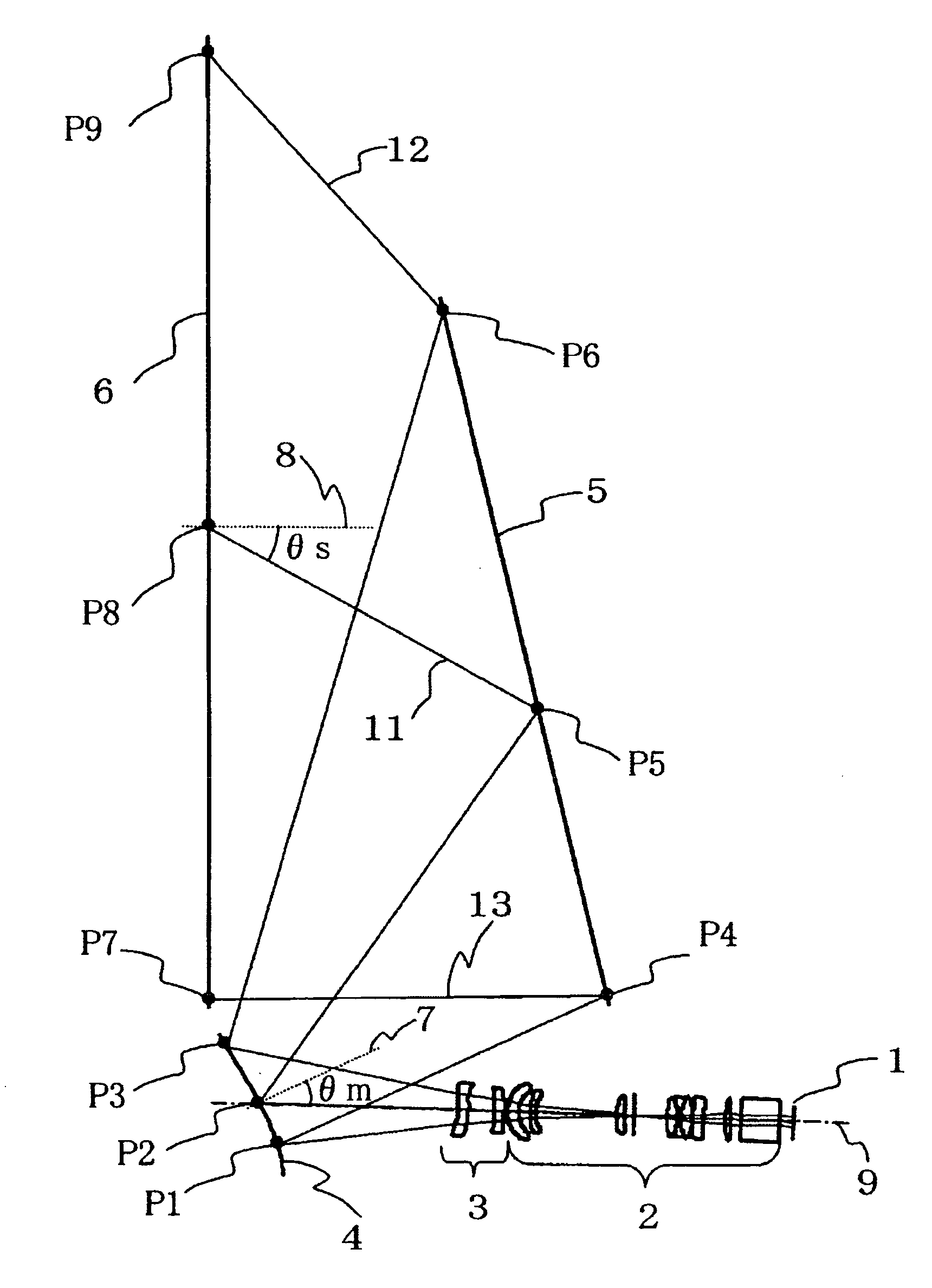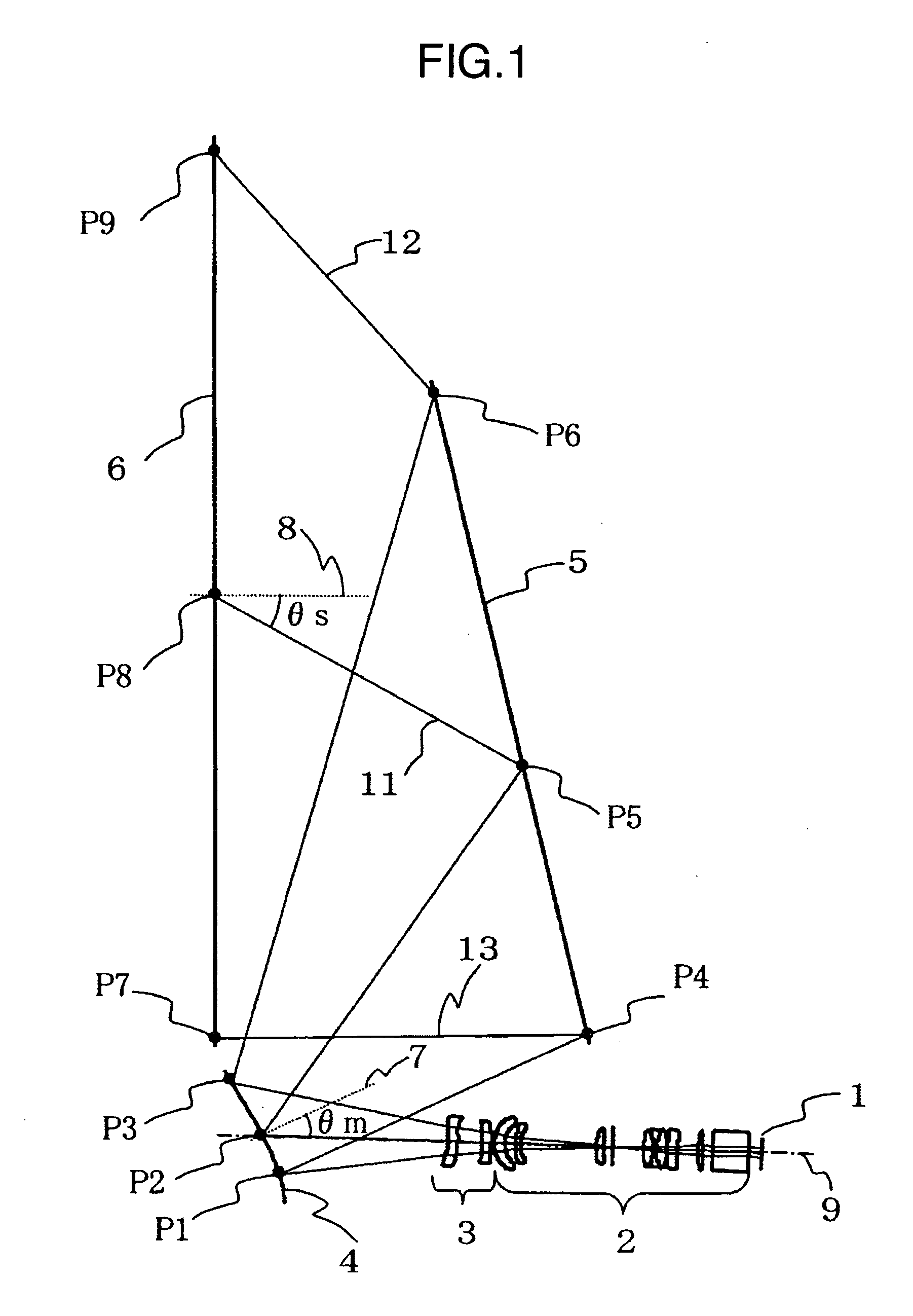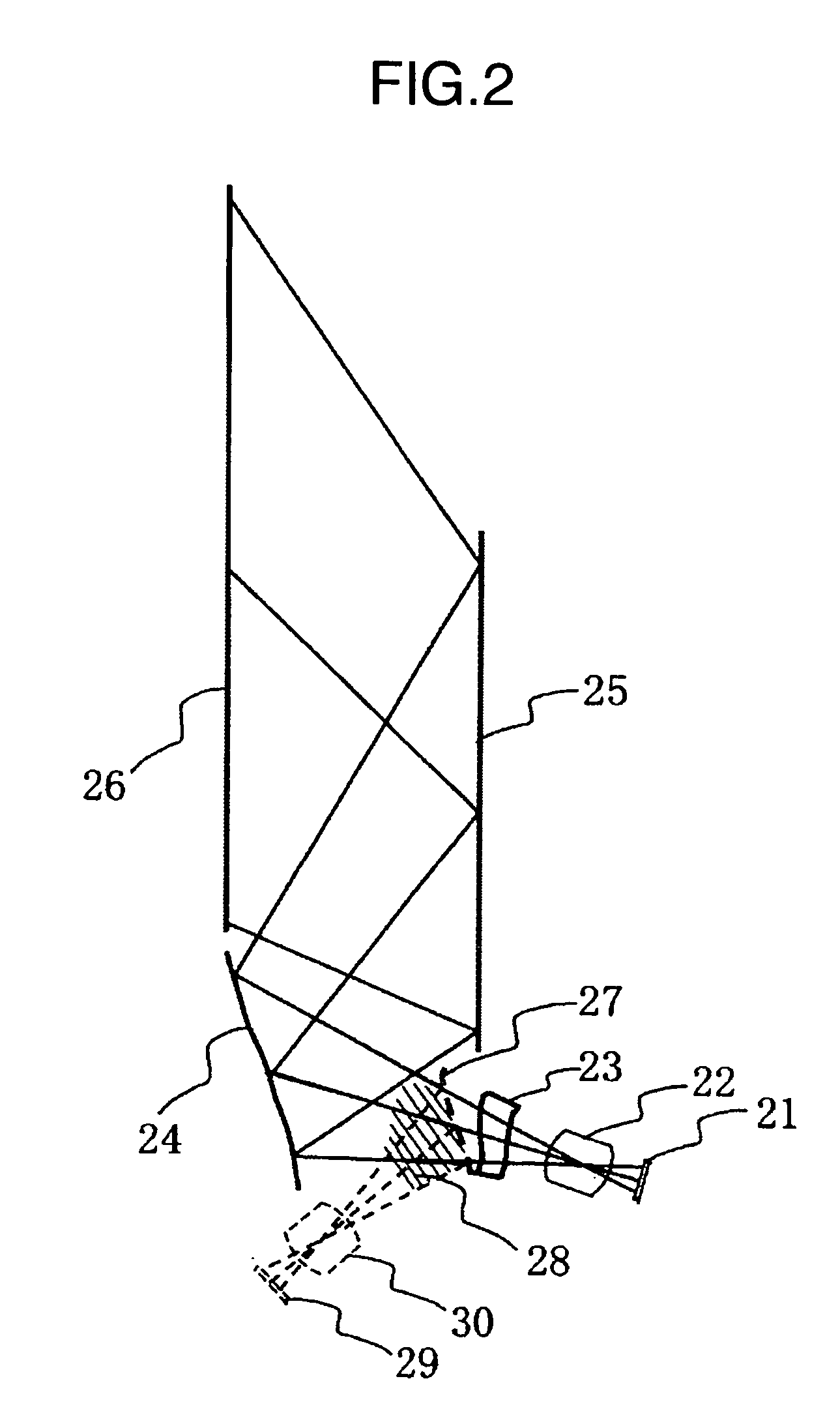Projection optical unit and projection type video display device using the unit
a technology of projection optical unit and projection type, applied in the direction of optics, projectors, instruments, etc., can solve the problems of difficult to enlarge the field angle, the device cannot be thinning,
- Summary
- Abstract
- Description
- Claims
- Application Information
AI Technical Summary
Benefits of technology
Problems solved by technology
Method used
Image
Examples
example 1
[0060] One typical example of the present embodiment using typical numerical values will be described with reference to FIGS. 4 to 7 and Tables 1 to 4. FIGS. 4 and 5 show ray diagrams of an optical system according to the present invention based on a first numerical value example, In the above-described XYZ orthogonal coordinate system, FIG. 4 shows a structure in a YZ section, and FIG. 5 shows that in an XZ section. FIG. 1 shows an example in which a folding mirror is disposed midway in a front group 12 of a projection lens 2, and an optical path is once bent in an X-axis direction. FIG. 4 omits this folding mirror, and shows an optical system developed in a Z-axis direction. FIG. 5 shows an optical system including the folding mirror to bend the optical path. A position or angle for disposing the folding mirror is somewhat arbitrary, and a function of each optical element is not influenced. Therefore, in the following description, the folding mirror is omitted.
[0061] In the prese...
example 2
[0079] Next, a second example will be described.
[0080] A second typical example of a projection optical unit according to the present invention will be described with reference to FIGS. 8 to 10 and Tables 5 to 8.
[0081]FIG. 8 shows a ray diagram of a second numerical value example of the present invention. Light emitted from an image display element 61 displayed on a lower side of FIG. 8 first passes, in order, through a front group 62 of a first optical system including transmission type lenses having rotationally symmetrical surface shapes, and a rear group 63 of the first optical system including transmission type lenses having free shaped surfaces. Thereafter, the light is reflected by a reflection surface 64 having a free shaped surface of a second optical system, and reflected by a flat rear mirror 65 before entering a screen 66.
[0082] Here, the front group 62 of the first optical system includes a plurality of refraction surfaces which are all rotationally symmetrical, four...
example 3
[0096] A third numerical value example according to the present invention will be described with reference to FIGS. 11 to 13 and Tables 9 to 12.
[0097]FIG. 11 shows a ray diagram of a third numerical value example of the present invention. Light emitted from an image display element 71 displayed on a lower side of FIG. 11 first passes, in order, through a front group 72 of a first optical system including transmission type lenses having rotationally symmetrical surface shapes, and a rear group 73 of the first optical system including transmission type lenses having free shaped surfaces. Thereafter, the light is reflected by a reflection surface 74 having a free shaped surface of a second optical system, and reflected by a flat rear mirror 75 before entering a screen 76. Here, the front group 72 of the first optical system includes refraction surfaces which are all rotationally symmetrical, four of the respective refraction surfaces are rotationally symmetrical non-spherical surfaces...
PUM
 Login to View More
Login to View More Abstract
Description
Claims
Application Information
 Login to View More
Login to View More - R&D
- Intellectual Property
- Life Sciences
- Materials
- Tech Scout
- Unparalleled Data Quality
- Higher Quality Content
- 60% Fewer Hallucinations
Browse by: Latest US Patents, China's latest patents, Technical Efficacy Thesaurus, Application Domain, Technology Topic, Popular Technical Reports.
© 2025 PatSnap. All rights reserved.Legal|Privacy policy|Modern Slavery Act Transparency Statement|Sitemap|About US| Contact US: help@patsnap.com



